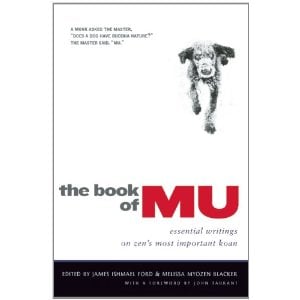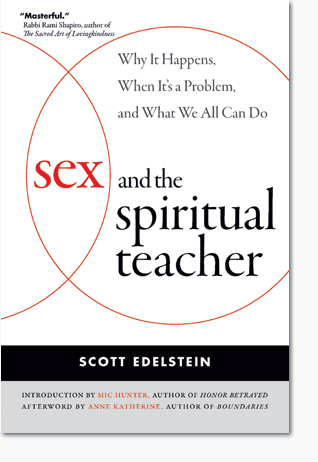 Mu is Zen’s most famous and challenging koan.
Mu is Zen’s most famous and challenging koan.
The Book of Mu (Wisdom Publications) is a collection of essays, contemporary and classic on this ancient mind puzzle and a wonderful introduction to the practice of Zen.
I have had little exposure to the Rinzai and koan traditions of Zen. I have practiced Soto Zen and Zazen, but never koans. After reading through the thoughtfully collected and contributed essays by James Ishmael Ford and Melissa Moyzen Blacker, I feel that I now have.
Mu is under my skin, working on me, whether I like it or not!
The koan proceeds something like this: A peasant asks the Zen master Joshu (or Chau-Chou, or Zhaozhou), “does a dog have buddha nature?” To this query Joshu replies, “Mu.” This seems to be a contradiction. “Mu” translates to “no” or by extension “emptiness.” It seems that Joshu is saying the dog does not have buddhanature, but the Buddha was clear that all sentient beings have buddhanature. What gives?
Read on to find out. If the koan is interpreted literally it does not make sense, but as a Zen master, Joshu would not have meant it literally.
This is the type of book that you don’t have to read cover-to-cover; you can skip around reading essays out of sequence, each circling around the truth of Mu. This truth can’t be grasped at an intellectual level.
If metaphor is understanding one thing in terms of another, koans are our most basic metaphors. We use koans to understand one thing — ultimate reality — in terms of another–the words, images, and feelings inspired by the koan. And, as the authors suggest, Mu is the koan of all koans. Thus, Mu is the metaphor of all metaphors.
Here is an excerpt from Melissa Myozen Blacker’s essay, “No is Not the Opposite of Anything.”
We are truly cultivating an empty field in which seeds of reality, through hearing teachings and experiencing life as directly as we can, beginning to take root at the deepest place, eventually to blossom into wakefulness–into the opening of the minds’e eye. Nothing but Mu, at every moment, filling our conscious and then our unconscious minds–every thought accompanied by this one word, which functions as a stand-in for a reality that is essentially nameless. (emphasis added).
This “standing in” is the metaphor of all metaphors. The transmission point between lived experience and understood experience; between reality and thought. It’s the very point where we begin to construct our experience and Mu brings back to this moment just before that construction arises giving us a glimpse of the unconstructed, unadulterated reality that we are.
Pre-order The Book of Mu now on Amazon and read an excerpt from the detailed review in the magazine Buddhadharma: The Practitioner’s Quarterly.

